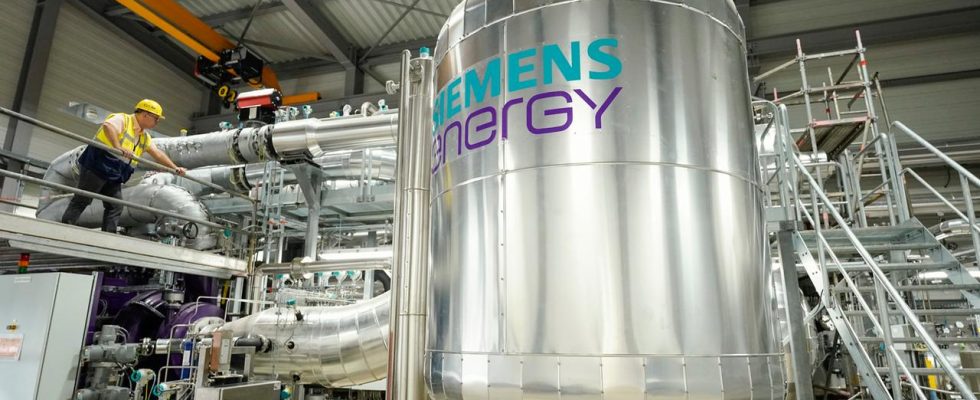Since this week, around 3,500 households in Mannheim have been able to obtain their heat from the Rhine without emissions. Germany’s largest river heat pump could become a model for many municipal heating networks.
At first glance, the new river heat pump cannot be recognized at all. While the technological innovation is hidden in a simple gray industrial hall, the four blocks of the large Mannheim power plant are spiraling up around it. Electricity and heat are still generated here in the south of Mannheim primarily through the combustion of hard coal. That should change by the end of the decade.
“By 2030, we will generate our district heating in Mannheim and the region entirely from climate-friendly energy sources,” says Georg Müller, CEO of the Mannheim energy supplier MVV. The path to get there is quite sporty, admits the boss of the local energy company. “We have to replace 100 percent coal-fired heat with a mix of renewable energies.” In addition to river heat, geothermal energy and residual heat from waste recycling are used.
Five degrees in the Rhine water, 99 degrees for district heating
Inside the gray industrial hall, an extensive pipe system extends over two floors, connecting Rhine water, refrigerants and district heating in circuits. The XXL heat pump basically works in the same way as the air heat pump in a home: heat for heating is generated from the ambient heat using a heat exchanger and the use of electricity.
Instead of the heat from the air, the run-of-river power plant uses the warm water from the Rhine. The heat exchanger removes the heat contained therein. The river water, which then cools down by around two to three degrees, goes back into the Rhine. The heat extracted is compressed in the heat pump and can now – in a further circuit – heat the water in the district heating network to up to 99 degrees. This can then be used for heating. This works well even when the Rhine is only around five degrees warm in winter, according to the operators.
Large heat pumps – great potential
The potential of such large heat pumps is huge, says Fabian Ahrendts from the Fraunhofer Institute for Energy Infrastructures and Geothermal Energy (IEG) in Cottbus. He speaks of a “sleeping giant” that needs to be awakened. “Heat pumps are the most efficient way to provide heat in a green energy system. We have not yet fully exploited their potential.”
Where heat from river water is still used
Large heat pumps on rivers have been in use in Scandinavia for many years. In Germany, large systems to supply several hundred or even thousands of households with heat have been put into operation or are being planned, not only in Mannheim, but also in Berlin, Hamburg, Stuttgart and Rosenheim.
In a recently published study, Ahrendts emphasizes that Germany can cover its entire heat needs by 2045 through the use of large heat pumps. However, the prerequisite for climate-neutral operation is the use of “green” electricity, i.e. wind or solar energy.
But why is investment in new heat pump power plants only now? “So far it hasn’t been worth it. If you simply compared the prices for energy, then the use of this technology was not yet economical. But that’s different now,” says MVV boss Müller. This is also related to the rising CO2 price.
Thousands of tons of CO2 are saved
With the river heat pump that has now been put into operation, 3,500 households in Mannheim can be supplied with “green” district heating, according to the operator MVV. In the summer months, the entire district heating requirement can even be covered “green”. The largest plant in Germany to date has an output of 20 megawatts and, according to the company, saves 10,000 tons of CO2 annually.
The fact that it is located in the place where hard coal is still used as the number one energy source is due to the infrastructure. “Here at the location of the large power plant there is, on the one hand, an existing infrastructure for feeding in district heating and there is a district heating storage facility,” says CEO Müller. The federally funded project as a “real-world laboratory for the energy transition” could become a model for many municipalities – provided they are located on the water.

